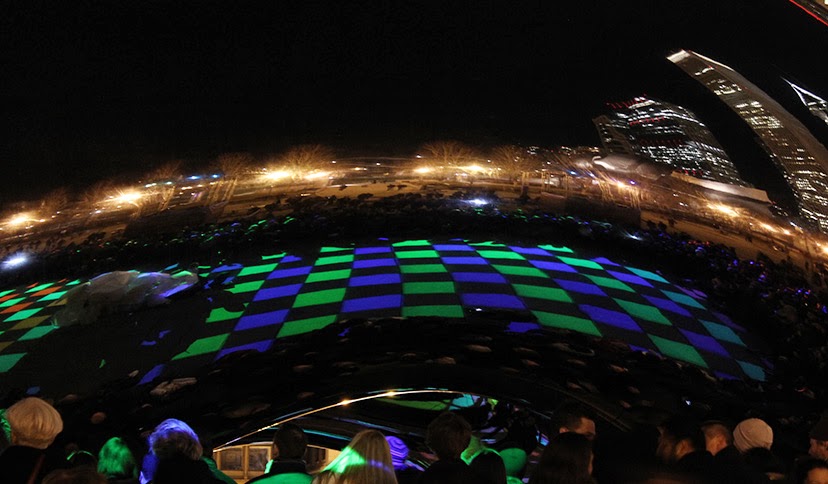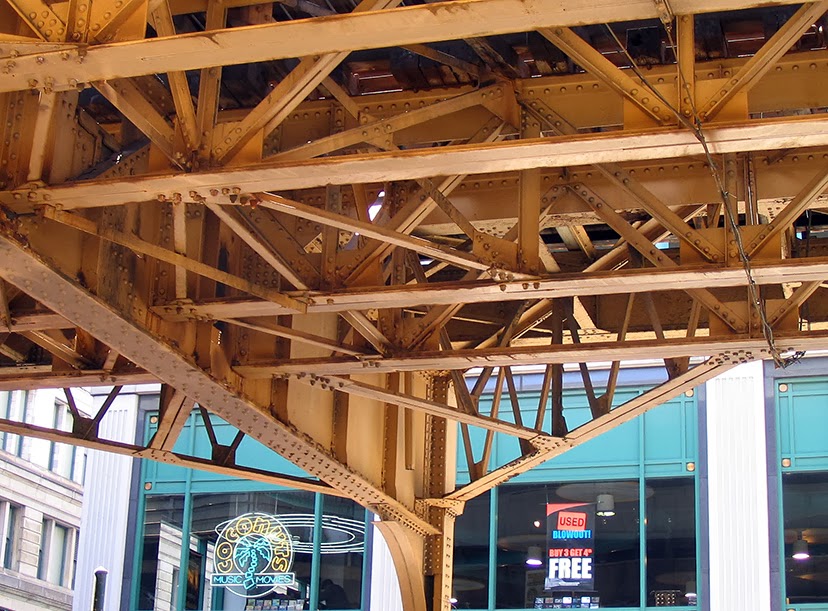 |
| Image: City of Chicago |
Efforts begin with stretching this year's Chinese New Year celebrations from January 31 through February 14 and from Chinatown and the Loop to throughout the city. The expectation is that once word gets around, large numbers of citizens on the Chinese mainland will be rushing to the nearest airport - if they can find it in the smog - to get the next flight to Chicago to see those amazing New Year's festivities they've heard so much about. As one legendary Chicago performer would say, �It could happen!�
 |
| Image: City of Chicago |
I love competitions as much as the next guy, but I can't help wondering why Emanuel doesn't just pick up the phone and call in Chicago's extraordinary lighting designers. It's not like our city is somehow bereft of striking architectural lighting. Somewhere along the way, Rahm must have noticed the way the floodlit Wrigley Building has anchored Michigan Avenue for the better part of a century, or how the tops of such landmarks as the Hancock Center, 900 North Michigan, the Wrigley clock tower and now even the Hotel Intercontinental shine with nocturnal color that actually changes in hue throughout the year.
 |
| Images courtesy David Davies Design Studio |
Rather than private buildings, however, Rahm seems to be placing an emphasis on lighting public infrastructure, which falls within the sweet spot of another Chicago designer, Tracey Dear, who rescued the grubby decrepitude of the pavilion designed by Zaha Hadid for the Burnham Plan Centennial with beautiful nighttime lighting.
Dear's debut project was actually a colorful illumination of 11 bridges across over a mile of the Chicago river. Imagine the procession of those lit bridges showing up in one of those aerial shots that have become the hallmark of Sunday/Monday night football broadcasts.
 |
| Luftwerk, Luminous Field, at Cloud Gate |
In yesterday's press release, Emanuel united his two initiatives under �the Elevated Chicago� banner, and his use of the world �Elevated� leads me to something I've been proposing - to absolute silence - for years. Wabash Avenue has traditionally been considered the problem child of the Loop because of its falling beneath the shadow of the Loop L. Most recently, the Chicago Loop Alliance, in partnership with Civic Artworks - has been soliciting ideas for their campaign, How Would you improve Wabash Avenue?
To me, the primary answer has always been obvious. Stop trying to ignore the L and start looking at it. Ultimately, the Loop L is not just historic infrastructure - it's the largest piece of sculpture in Chicago. Take the time to look at the pillars, girders, trusses and struts, and you'll find amazing, intriguing and - yes - beautiful webs of form. It's like an enormous Richard Serra, with delicacy and detail added in.
This isn't just a tourist thing. It's about countering the drear cold darkness of winter in the city, and bringing out the best in its architecture and infrastructure even at night. Yes, Chicago - it's schools and government institutions - need bread, desperately, but no city survives without the circuses that give the heightened sense of life that makes people want to live there.
During the day, it's pretty easy to see the L's potential but right now at night, it's lost in the shadows, a great, unending blob of darkness that casts Wabash down into the gloom.
Let Mooney or Dear or Kersal� loose on it. Let them light it up in all its exquisite detail, and - I guarantee you - Wabash at night will become one of Chicago's premier attractions, drawing tourists to its glow like bugs to a zapper.






Tidak ada komentar:
Posting Komentar